– Nathan’s M.U.S.C.L.E. Blog
– Somethingawful.com Review
– Thunderboltgames.com
– Gamefaqs.com #1
– Gamefaqs.com #2
– Gamespot.com
– The Irate Gamer Review (NSFW)
– The Subtle Art of Video Game Critique
The first is the groundbreaking uniqueness of the game. The Tag Team Match M.U.S.C.L.E. video game from Bandai appears to be the first branded wrestling video game for the classic NES system. It was two years before any other branded wrestling game entered the marketplace. It is also one of the first two branded video games for the NES system (the other being Popeye). While existing properties had entered the video game market before, the historic success and market changing impact of the NES make these games especially important.
Tag Team Match M.U.S.C.L.E. may also be the first wrestling game for the system overall. Unfortunately it is incredibly difficult to absolutely confirm that fact. At a minimum, it shares that honor with Data East’s Tag-Team Wrestling. Both games were likely released sometime in the third quarter of 1986. The far more popular, and often credited as first wrestling game, Nintendo’s Pro Wrestling was not released until the first quarter of 1987.
Tag Team Match M.U.S.C.L.E. was also one of the first games that allowed players to choose their own character. Each character also had unique “moves.” These options now seem commonplace, but their distinctiveness in 1986 makes the game very exceptional. The “Super Wrestlers” and their “special techniques” are:
Muscle Man – Muscle Driver
Robin Mask – Tower Bridge
Ashra Man – Ashra Buster
Terry Man – Bulldogging Headlock
Geronimo – Tomahawk Technique
Larmen Man – Fatal Kung Fu
Buffalo Man – Hurricane Mixer
Wars Man – Bear Claws
The game also featured Meat (#189 & #193) as the ringside trainer. The trainer was the source of the “booster ball” which:
Provides each wrestler with a chance for him to use a technique that is special or unique to him. When you receive the Booster Ball the Trainer throws, your super wrestler turns on and off, and you can use the special technique by which he can eliminate his opponent.
 The game was also the first to offer wholly different wrestling rings with the Ice Ring and Electrified Ring. These rings may seem gimmicky, but they seem to echo the distinctiveness of “Steel Cages” or “Barbwire Ropes.”
The game was also the first to offer wholly different wrestling rings with the Ice Ring and Electrified Ring. These rings may seem gimmicky, but they seem to echo the distinctiveness of “Steel Cages” or “Barbwire Ropes.”
Modern reviews of the game are quick to point out the simplistic and redundant nature of the game. However, how is the redundancy and simplicity and different from most, if not all, of the other sports games? Tag Team Match M.U.S.C.L.E. never garners any of the nostalgic praise that game like Baseball, Tennis, and 10-Yard Fight receive.
Picking apart the graphics and gameplay is another common activity when the game is reviewed. Once again, the graphics and gameplay is representative of the time period. Optimistically, the game can be praised for trying to allow fluid and complex interactions between stylized characters.
There are a couple of interesting footnotes to this game. It was originally released in Japan around 1985 as Kinnikuman Muscle Tag Match. That version of the game also featured the Nazi character Brocken Jr. The M.U.S.C.L.E. release of the game saw that character replaced by Geronimo. Kinnikuman fans may also be surprised to see that the Ramen Man character, while still included, has inexplicably had his name changed to Larmen Man in the game’s instructions.
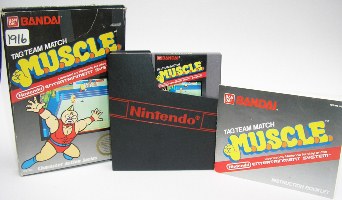
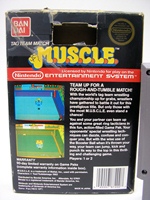
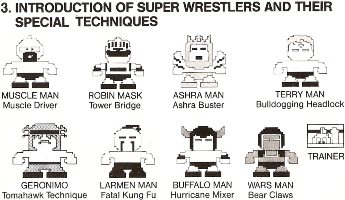
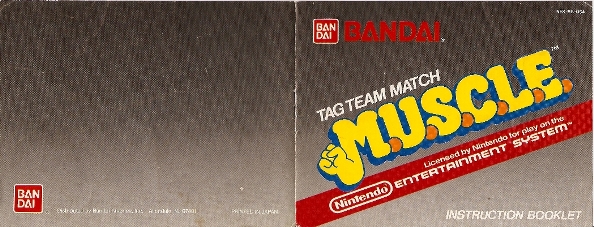
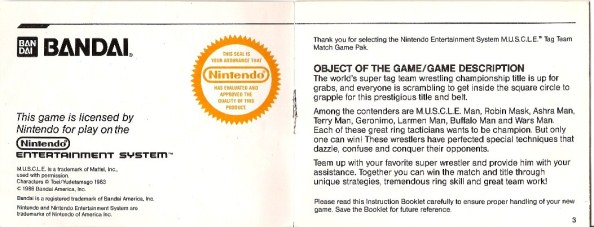
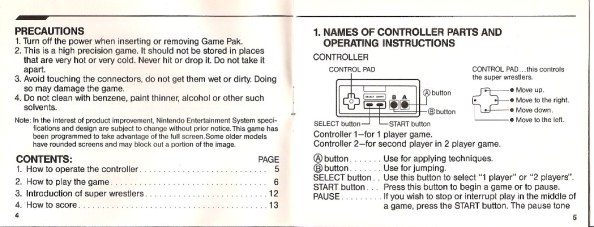
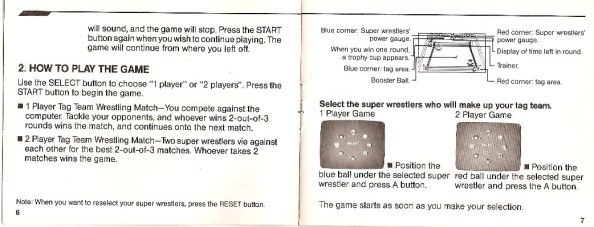
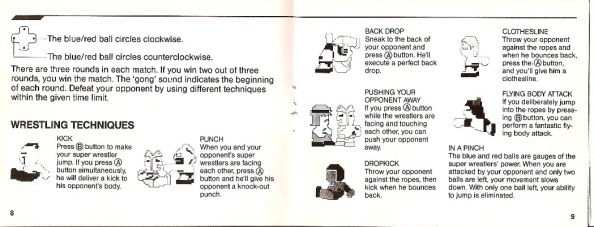
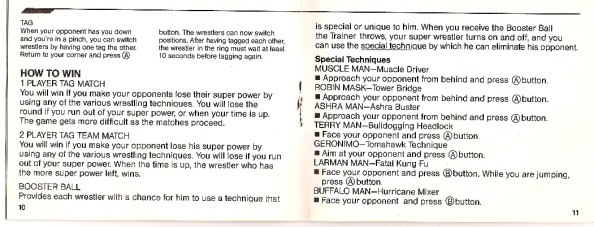
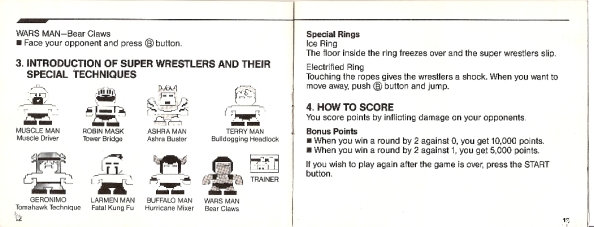
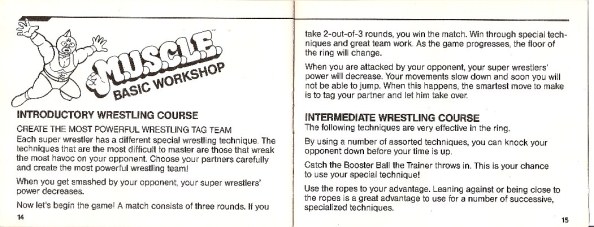
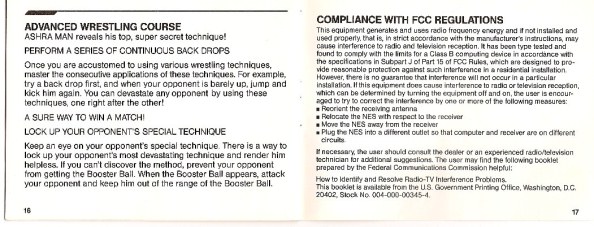
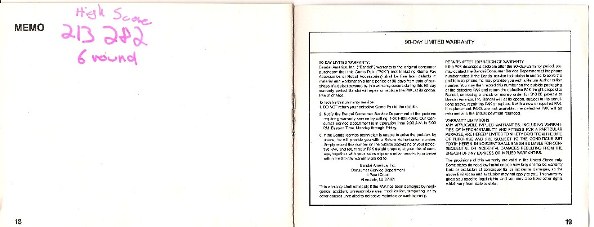
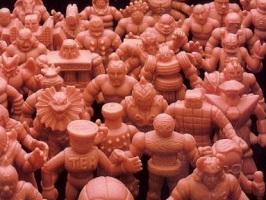
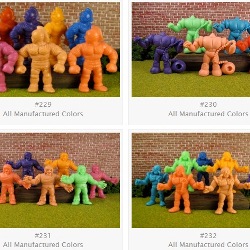
#1 by Ryan on March 9, 2011 - 12:15 pm
I never liked the game even as a kid. The gameplay is aweful. But i do own a copy
#2 by John Mitchel on April 3, 2014 - 12:17 am
It isn’t something I think I will play, but it’s a cool shelf display if you stand it behind the figures so I may try to score one.